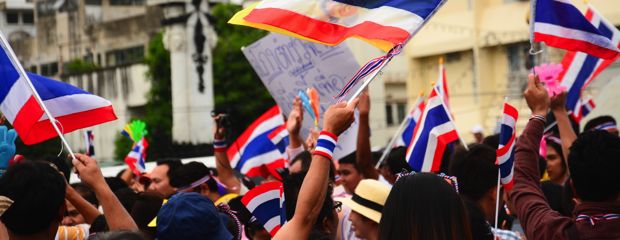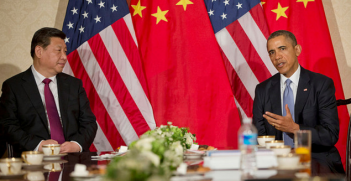Southeast Asia Maintains International Importance

As the military regime in Thailand issued a new interim charter and the political turmoil in Cambodia began to ease, the likely loser of the Indonesian presidential election reiterated his pledge to challenge the outcome. Meanwhile, the head of the armed forces in the Philippines cautioned the military not to get involved in politics – a not-so-subtle message amid low-level rumors of dissent and rumblings of a coup.
These issues have garnered little attention in the international media. On the surface, each is fairly isolated and contained, and certainly not as newsworthy as the Gaza conflict or the downing of more Ukrainian aircraft by pro-Russian militants. But while Southeast Asia – unlike the Middle East and, more recently, Eastern Europe – does not always give the appearance of an active fault line between large powers, its regional dynamics are no less shaped by history and geopolitical constraints. The seemingly isolated national crises in the region exist against a backdrop of broader regional competition.
Domestic Troubles in the Region
Political turmoil is nothing new in Southeast Asia. Coups in Thailand are in some ways part of the normal political cycle, with the latest a reaction to nearly a decade of increasingly irresolvable differences between competing interest groups for control over the economic heart of the nation. At the risk of gross oversimplification, the political crisis in Thailand reflects a longstanding competition between the rural agricultural interests in the north and east and the mercantile urban interests in Bangkok. The monarchy had stood as moderator between these forces, but with the king’s age and health raising questions about succession, it was the military that again intervened to enforce balance.
In Cambodia, a yearlong political standoff has been at least temporarily relieved through negotiations. But Hun Sen, the strongman master of political manipulation, is beginning to lose his grasp on power as he seeks to increase Cambodia’s economic activity and international interconnectedness. Like Myanmar, Cambodia is attempting a democratic transition while not quite understanding the chaotic implications of democracy and with leadership not quite ready to step aside because of fears of losing influence and at least the semblance of order.
The threatened legal challenge in the Indonesian presidential election highlights the lingering sense of power among elements of Suharto’s former autocratic regime. Although the military as an institution has changed radically in shape and role since the fall of Suharto, former military men still seek a role in politics and business for the spoils they were once promised that are no longer automatically theirs.
In the Philippines, despite whispers about a coup, a concerted move by the military is not likely. Rather, it is a question of the military’s potential acquiescence to other social forces that would challenge a democratic transition of leadership. Instead of direct military coups, the Philippines has eased into a pattern of people power movements as the method of removing an elected leader before the end of the term. The military must step aside to allow that to happen, but it is not necessarily the driving force.
Taken individually, each of these issues is primarily local. Certainly a coup or a people power movement would attract headlines, but the implications are muted for neighboring countries and nearly indiscernible for distant powers. Persistent mass street protests and violence in Bangkok and Phnom Penh appear to have little effect on international order, where similar activities in Cairo or Kiev seem to shake the international system. Weekly bombings by separatist militants in southern Thailand, or clashes between Muslim rebels and military forces in the Philippines’ Mindanao, have little of the instantly visible international ripples of a rocket landing near an airport in Israel. And aside from the occasional flare-up warnings of imminent but so far unfulfilled major maritime clashes among competing claimants to rocks and reefs in the South and East China seas, what happens in Southeast Asia seems to stay in Southeast Asia.
Deeper Forces at Work
The intense attention on Southeast Asia during the Cold War, when it was a more obvious proxy playground for the American and Soviet powers, the Chinese and lingering colonial powers, has faded. The slow rise of China, and the largely unchallenged U.S. security role in Southeast Asian waters, left the countries to deal with their own internal ethnic and political problems while external focus on the region turned to economics. Southeast Asia was a “miracle,” at least briefly, and is once again emerging as one of the more dynamic economic areas on the globe. Inter-state competition was managed through the loose assemblage of the Association of Southeast Asian Nations or was carried out primarily in the trade sphere. Aside from some minor border skirmishes and ships at sea passing in the night, since Vietnam vacated Cambodia in 1991 there has not been a major military confrontation between regional states.
But the placid surface belies the deeper stirrings. Southeast Asia is changing, even reactively. The countries are becoming more aware of their regional security challenges, and they are acutely aware of the rising competition as China seeks to alter the regional security status quo and Japan begins to emerge from its decades of passivity. The post-colonial legacy of Southeast Asia is giving way to a renewed competition among the larger regional powers, but fractures in Southeast Asia – both within the individual countries and as a group – leave the region vulnerable.
Southeast Asia may not be a region that breaks into inter-state warfare, but it is full of uncertainty and localized internal conflicts reflecting the odd borders left over largely from the colonial era combined with a complex topography. These states surround one of the most important waterways for two of the world’s largest economies: China and Japan, which compete for protection and control of that water. Southeast Asia’s internal fractures make it exploitable by these larger powers, while the Southeast Asian states and sub-states can exploit the rivalries among the bigger powers to gain concessions. Southeast Asian geopolitics may not have the headline-grabbing actions of an Arab Spring, Islamic State advance or Ukrainian civil conflict, but they are no less dynamic, competitive and central to the balance of major powers in the international system.
This article was originally published by Stratfor Global Intelligence. It is republished with permission.





